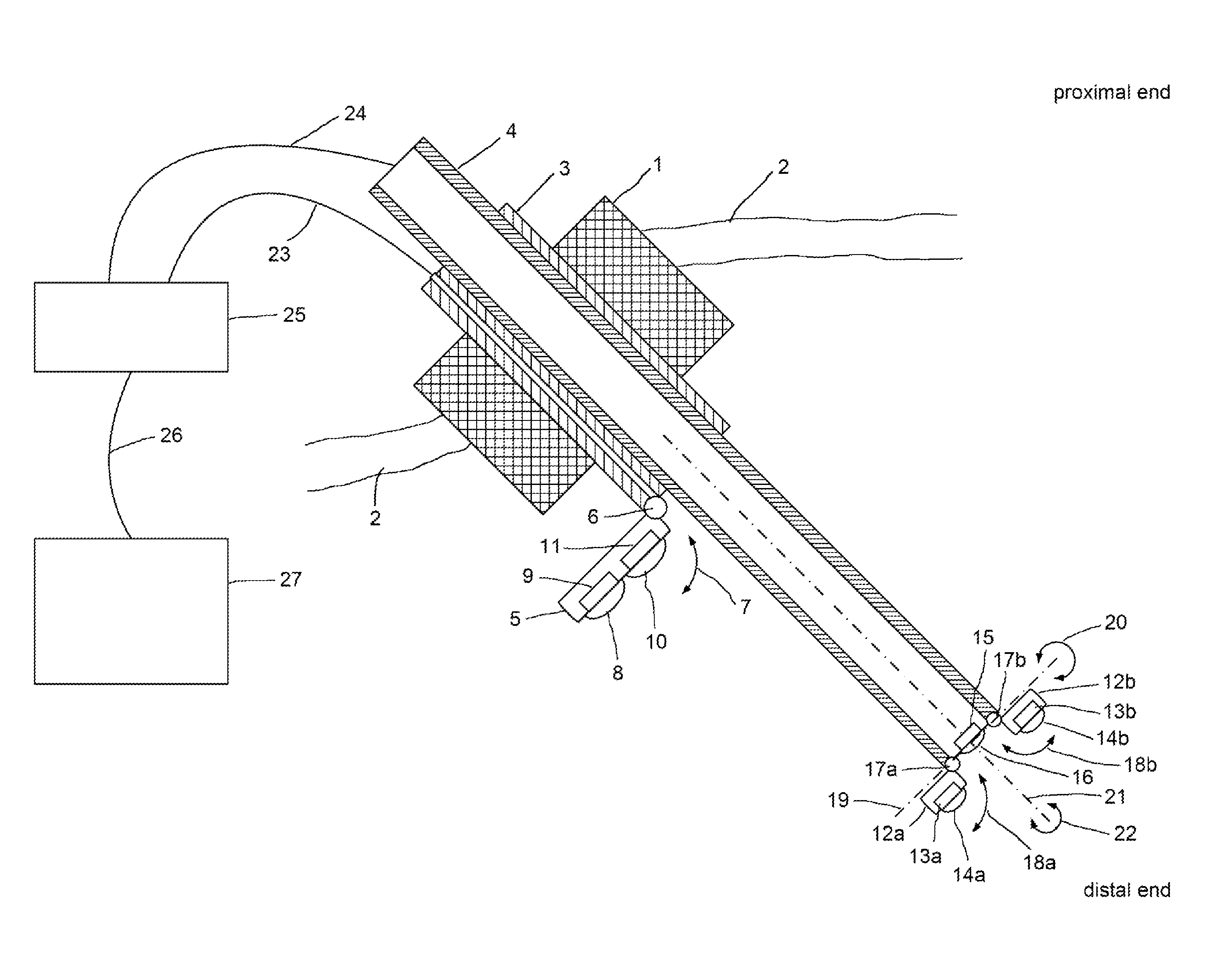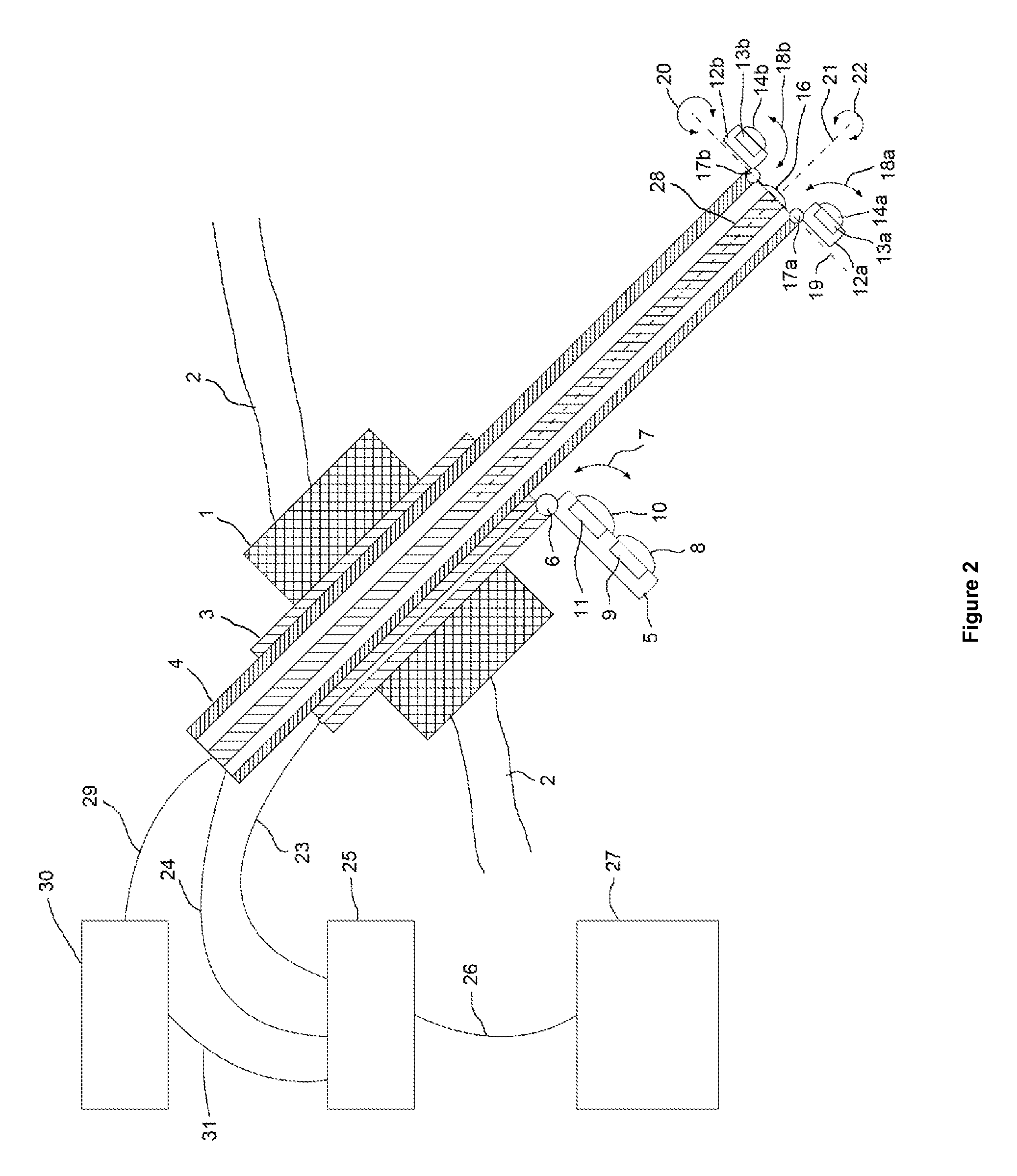Endoscope comprising a system with multiple cameras for use in minimal-invasive surgery
a multi-camera system and endoscope technology, applied in the field of endoscopes with multi-camera systems, can solve problems such as inability to use these cameras
- Summary
- Abstract
- Description
- Claims
- Application Information
AI Technical Summary
Benefits of technology
Problems solved by technology
Method used
Image
Examples
Embodiment Construction
[0020]The invention is therefore based on the objective of providing an improved visualization system for minimally invasive surgeries, such as laparoscopic surgeries, which allows the surgeon to coordinate the instruments in a simple manner using a single trocar to access the body without having to use an additional trocar to access the body. According to the present invention, this objective is achieved by means of the endoscopes and surgical robot systems disclosed herein.
[0021]The present invention provides an endoscope with a multi-camera system for use in minimally invasive surgery, such as laparoscopy.
[0022]A first object of the present invention concerns an endoscope for minimally invasive surgery, especially for use within a surgical robot system, which basically extends over the entire length of the endoscope from the outside to the interior of the body, and which comprises at its distal end at least one lighting unit and two imaging devices, wherein each of the imaging de...
PUM
 Login to View More
Login to View More Abstract
Description
Claims
Application Information
 Login to View More
Login to View More - R&D
- Intellectual Property
- Life Sciences
- Materials
- Tech Scout
- Unparalleled Data Quality
- Higher Quality Content
- 60% Fewer Hallucinations
Browse by: Latest US Patents, China's latest patents, Technical Efficacy Thesaurus, Application Domain, Technology Topic, Popular Technical Reports.
© 2025 PatSnap. All rights reserved.Legal|Privacy policy|Modern Slavery Act Transparency Statement|Sitemap|About US| Contact US: help@patsnap.com



